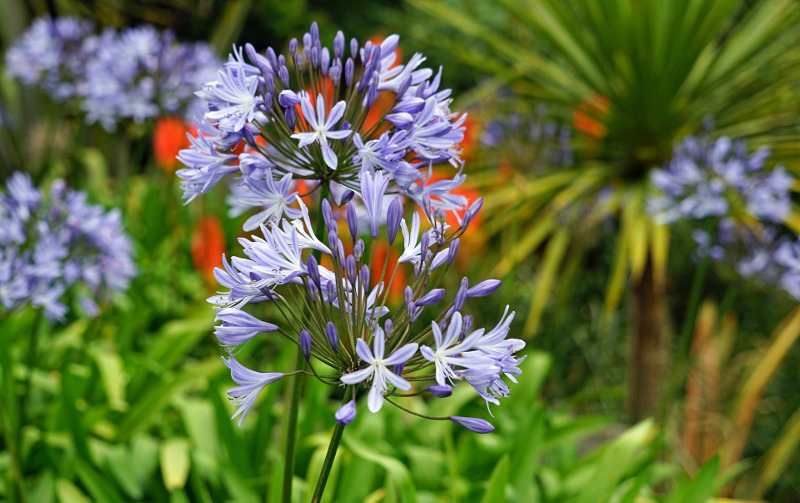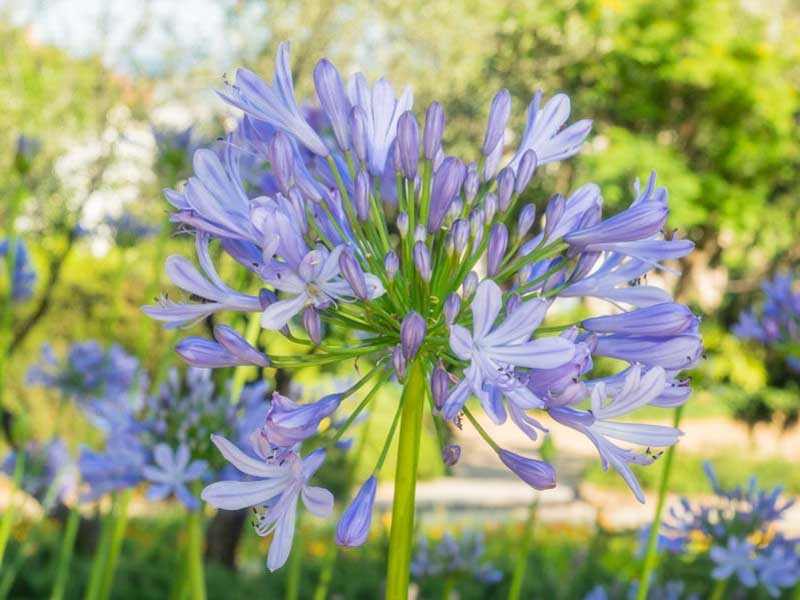Growing Agapanthus: A Total Overview to Beautiful Blooms
Growing Agapanthus: A Total Overview to Beautiful Blooms
Blog Article
Releasing the Secret to Effective Agapanthus Growing: Advice for a Flourishing Yard
In the world of gardening, cultivating agapanthus successfully requires a tactical method that incorporates numerous elements of plant care. With careful interest to detail, one can open the tricks to nurturing these spectacular flowers, leading to a yard that flourishes with appeal and vibrancy. By understanding the nuances of agapanthus farming, one can create an atmosphere where these plants prosper and flower perfectly. In the complying with conversation, we will check out important ideas and methods that will assist you in the direction of a thriving agapanthus yard, providing understandings into finest techniques, dirt problems, watering techniques, and a lot more.
Planting Agapanthus: Finest Practices
When growing Agapanthus, correct soil prep work is essential for guaranteeing effective development and growth of these beautiful flowers. Agapanthus, typically referred to as Lily of the Nile or African lily, thrives in well-draining soil with a slightly acidic to neutral pH level - Agapanthus. Before planting, it is vital to change hefty clay soils with raw material such as compost or peat moss to enhance drain and supply crucial nutrients for the plants
To plant Agapanthus, pick a location that receives full sunlight to partial color, as this will certainly advertise healthy and balanced development and abundant flowering. Dig a hole two times the size of the plant's root ball and put the Agapanthus at the exact same deepness it was formerly growing. Carefully backfill the hole with soil, pressing down strongly to get rid of any type of air pockets around the origins.
Water the recently planted Agapanthus completely and continue to maintain the soil equally moist, especially throughout the plant's energetic expanding period. Agapanthus. Applying a balanced plant food once a month can further sustain the plant's development and blooming. By complying with these best practices for planting Agapanthus, you can create a spectacular display of these captivating blossoms in your yard
Suitable Soil Issues for Agapanthus
For optimum development and blooming success of Agapanthus plants, making certain the soil problems are ideal is crucial. Agapanthus likes soil that is abundant in nutrients, so incorporating a well balanced plant food during the growing season can promote healthy and balanced development and dynamic blossoms.

Watering and Fertilizing Tips
To guarantee healthy and balanced growth and vibrant blooms, appropriate watering and fertilizing methods are necessary for successful Agapanthus cultivation. Agapanthus plants gain from routine watering, particularly during the growing period. It is advised to water deeply as soon as a week, making certain the dirt is wet but not soaked. During heat or in pots, more regular watering may be required to stop the soil from drying entirely.
When it pertains to fertilizing Agapanthus, a balanced fertilizer with equivalent components nitrogen, phosphorus, and potassium can be applied in the spring to advertise healthy and balanced growth and flowering. Slow-release plant foods are perfect for providing nutrients progressively over an extensive period. Avoid over-fertilizing, as this can lead to too much foliage growth at the expense of blooms.
In addition, integrating raw material like compost into the dirt can improve nutrient levels and improve dirt structure, aiding in the total health and wellness of the Agapanthus plants. By following these watering and feeding suggestions, garden enthusiasts can guarantee their Agapanthus plants prosper and produce spectacular display screens of flowers.
Trimming and Deadheading Strategies
Appropriate trimming and deadheading techniques play a critical role in maintaining the health and wellness and visual appeals of Agapanthus plants, enhancing the necessary practices of watering and feeding for successful farming. Pruning pop over to these guys Agapanthus entails getting rid of invested flower heads, yellowing or dead fallen leaves, and total shaping of the plant to promote far better growth. Deadheading, the procedure of removing faded blossoms, not only boosts the plant's appearance however also motivates more blooming.
When deadheading Agapanthus, it is a good idea to snip off the blossom stem at the base making use of sharp, clean shears. This procedure reroutes the plant's energy from seed production back into root and foliage development, advertising a healthier and extra robust plant. Routine deadheading can expand the blooming duration of Agapanthus and protect against self-seeding, which can result in overcrowding.
In terms of pruning, Agapanthus generally benefits from a light trim after flowering to tidy up the plant and urge fresh development. Reducing the spent flower stems and getting rid of any kind of damaged or dead foliage assists keep the plant's vitality and overall appearance. Website Nevertheless, it is important to avoid cutting into the crown of the plant, as this can weaken its wellness.

Protecting Agapanthus From Vermins and Diseases
Applying effective bug and condition monitoring methods is important to protecting the health and vigor of Agapanthus plants in farming. Agapanthus are usually hardy plants, however they can still come down with numerous parasites and conditions otherwise appropriately taken care of. One typical insect that impacts Agapanthus is the Agapanthus borer, a caterpillar that tunnels into the plant, causing damages to the fallen leaves and blossoms. To avoid infestations, regular evaluation of the plants is important. If borers are spotted, they can be manually gotten rid of, or insecticidal soap can be made use of as a control procedure.
Along with bugs, Agapanthus are vulnerable to conditions such as origin rot and fungal leaf spots. These problems can usually be avoided by making certain proper drainage and staying clear of overwatering. If indications of disease appear, influenced components of the plant need to be quickly gotten rid of to protect against additional spread. Fungicides may likewise be utilized as a therapy measure, complying with the supplier's instructions thoroughly. By staying alert and dealing with insect and disease concerns without delay, gardeners can help their Agapanthus grow and prosper.

Verdict
In conclusion, successful cultivation of agapanthus requires correct growing strategies, perfect soil conditions, sufficient watering and fertilizing, routine pruning and deadheading, and protection from diseases and insects. By following these methods and ideas, garden enthusiasts can make sure a flourishing garden full of beautiful agapanthus blossoms. Agapanthus. Remember to preserve constant care and focus to detail to advertise the health and wellness and durability of these spectacular plants
When growing Agapanthus, appropriate soil preparation is essential for ensuring effective development and advancement of these gorgeous flowers.Water the freshly grown Agapanthus extensively and continue to maintain the dirt uniformly wet, particularly throughout the plant's active growing period.For ideal growth and blooming success of Agapanthus plants, making certain the dirt conditions are optimal is critical. When growing or transplanting Agapanthus, guarantee the soil is well-prepared to give the needed foundation for the plants to a fantastic read develop themselves efficiently. One typical insect that affects Agapanthus is the Agapanthus borer, a caterpillar that passages into the plant, creating damage to the flowers and fallen leaves.
Report this page